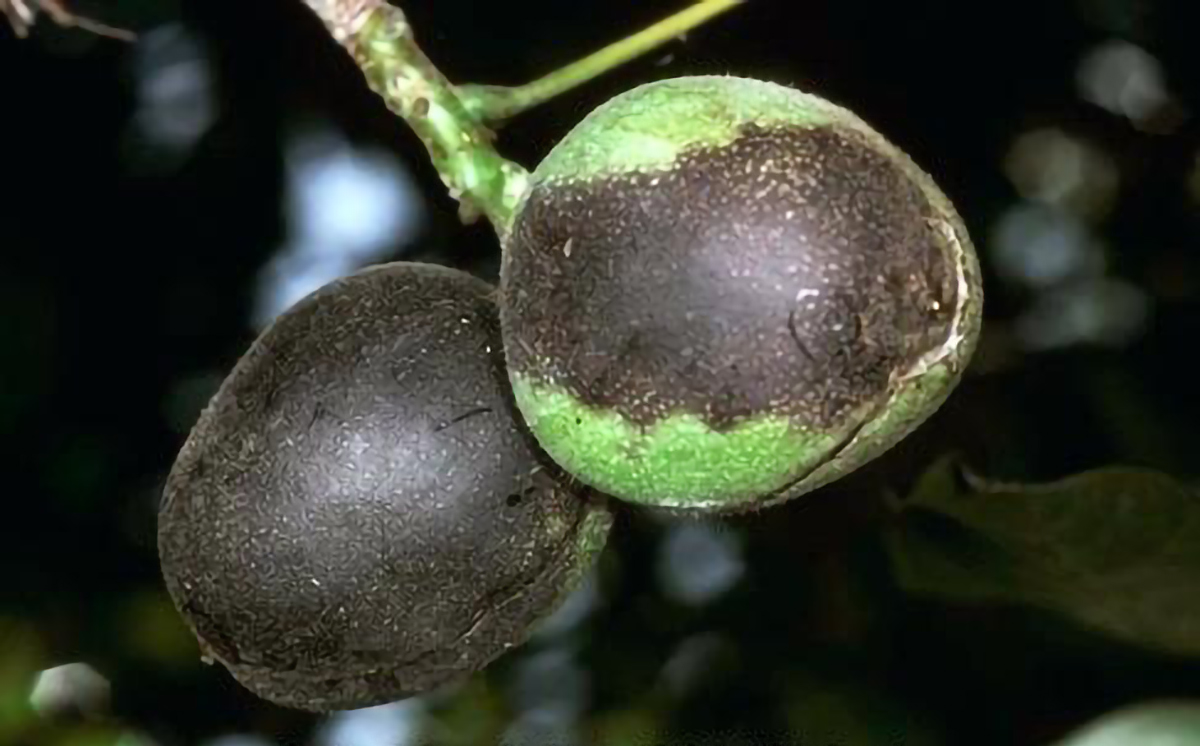A comparison of traps for walnut husk fly was done by grad student Megan Luke and Dr. Elizabeth Boyd, from the Chico State Plant Sciences Department to assist walnut growers with management decisions.
Boyd’s study included monitoring trap captures of WHF in two walnut orchards located in Butte and Solano counties. The study compared efficacy and performance of a Peterson trap and lure with that of a grower standard trap and lure. Boyd also included mapping of captures.
The UC Pest Management Guidelines advise trapping and monitoring catches to time treatment for this pest. Early WHF damage to the walnut crop can result in significant loss of value. Walnut husk fly is a pest in most California walnut growing areas. About the size of a housefly, WHF has one generation per year and overwinters as pupae in the soil. Adults emerge May-July. Boyd noted that not all larvae emerge in the first year, and can take four years to develop. The first sign of a WHF infestation is a small, sting like mark on the husk caused by this depositing of eggs.
Damage from husk fly is nutshell staining. Feeding also causes husks to stick to the shell, making them difficult to remove. Early season damage can result in shriveled kernels.
The Butte county orchard was located near Gridley. The mature orchard was Chandler on Paradox managed organically with flood irrigation. The Solano County orchard was near Dixon. The mature orchard was Tulare on Paradox irrigated with impact sprinklers, managed conventionally.
The four trap-lure combinations used in the study were Alpha Scents trap/Alpha Scents lure, Alpha Scents trap/Peterson lure, Peterson trap/Peterson lure and Peterson trap/Alpha Scents lure. Traps were placed at about five per acre, Boyd said, to determine infestations across the blocks.
Early trapping in June revealed no significant differences in trapping male or female WHF. Volatilization of the lure did not make a difference in trap efficacy. This means traps are comparable and provide a choice for producers.
Boyd’s 2019 study found comparable captures and costs with the four-trap/lure combinations. Season long maintenance was also comparable, with the exception that the Peterson trap did not need to be replaced.
Trap captures also definitively demonstrated location of hot spots in orchards. Studies to determine the reasons for the WHF hot spots and best locations for traps are ongoing.

Cecilia Parsons
Cecilia Parsons has lived in the Central Valley community of Ducor since 1976, covering agriculture for numerous agricultural publications over the years. She has found and nurtured many wonderful and helpful contacts in the ag community, including the UCCE advisors, allowing for news coverage that focuses on the basics of food production.
She is always on the search for new ag topics that can help growers and processors in the San Joaquin Valley improve their bottom line.
In her free time, Cecilia rides her horse, Holly in ranch versatility shows and raises registered Shetland sheep which she exhibits at county and state fairs during the summer.
















